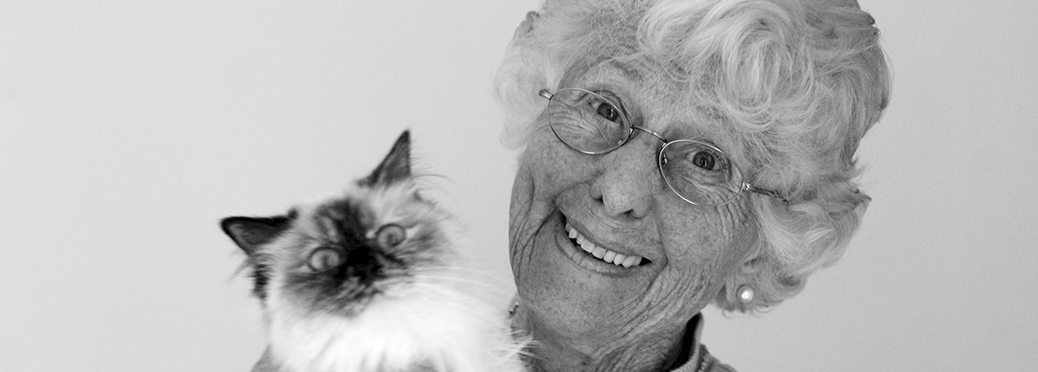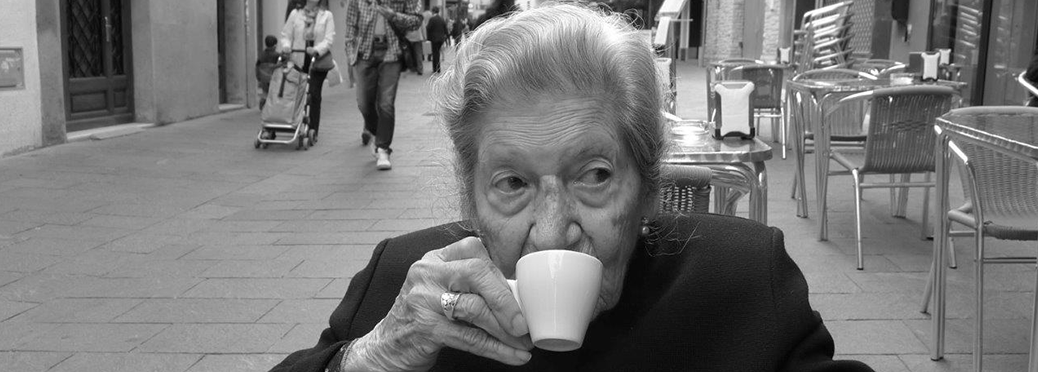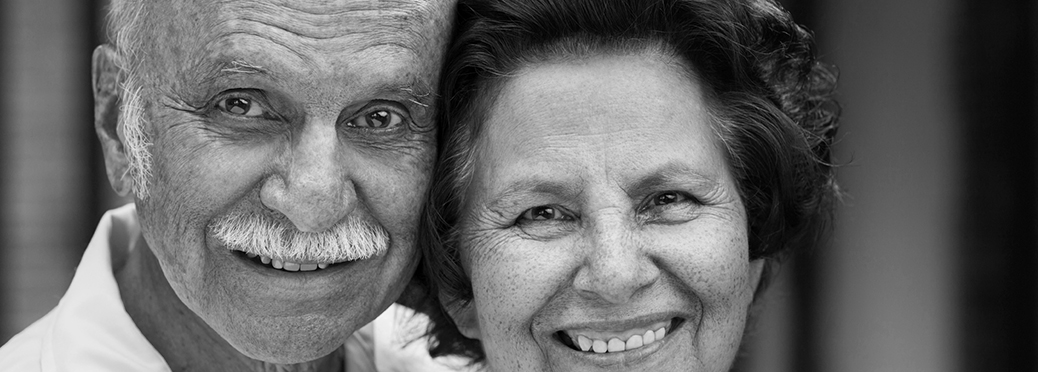All posts by wp6adm
Technology description
Ageing societies in western countries lead to more people with chronic health conditions and in need of care. Recent developments in technology have led to more devices supporting elderly people. They provide health care and enable elderly people to maintain their autonomy and allow them to live independently for a longer period of time. These technologies are subsumed under the term “telecare”. Trials have shown that hospital admissions and mortality can be reduced by such devices. Telecare may therefore unburden the health care system and serve at the patients’ best interest in allowing them to live for a longer period of time independently and increase quality of live.
How can technology empower seniors to better manage their everyday life?
For an overview of existing telecare technologies for senior citizens and future developments and tendencies in this field in Europe, please read the report at the end of this page. Below are some promising technologies that can help seniors to better manage their everyday life.
Devices, detectors and sensors
Tracking devices such as GPS receivers attached on a belt, necklace, shoe etc. can determine the position of the person wearing it. A person with dementia can use a GPS in her shoe and the device can alert relatives or care personell if the person moves outside a given area or is late home from a walk. This enables someone with e.g. dementia to take walks when she feels like it, and she can be taken care of if she gets lost.
Detectors and alarm systems can monitor, alert and act upon selected criteria (they are sometimes called smart house technologies). Lights, heating, doors and windows can be automatically controlled, and sensors can monitor and alert falls, fires, floods and similar. This can create greater security and independence in the living place.
Robots are automated machines that can be programmed and designed to make choices and adapt their responsibilities to the environment they operate in. Robots can help solve practical tasks at home, such as cleaning, gardening, vacuum clean as well as put the cups in and out of the dishwasher. Researchers are developing robots that can assist in more personal tasks like eating and body washing. This can ease everyday tasks, helping people to live independently at home.
Body sensors and specialised medical devices such as sensing patches, smart watches or arm wrists can monitor patients’ health status and enable medical treatment over distance. By monitoring and evaluating critical body conditions like heartbeat, lung capacity or blood values, one can get an assessment of a treatment program, medication, need for consultation or the like without leaving home. People with chronic heart disease can measure their heart activities with wireless sensors on their bodies. The data can be sent on a regular basis to the (health) care service and alarms will be triggered on critical conditions. In this way, patients can experience increased independence, safety, mobility and freed time.
Communication
Internet enables a multitude of ways to communicate. Most sensors, detectors, and monitoring devices are attached to tablets or mobile (smart) phones connected to the Internet to collect and share the data.
Some detectors and alarm systems may require more secure communication solutions and special purpose systems to ensure communication with the health care services and alarm-centrals (like the ambulance service and the fire brigade).
Services and applications
A myriad of services are available over the Internet. Via these services one can both maintain and make contact with others. Email, chat and social media enable communication with friends and family, as well as the health care provider and others. Video cameras, microphones and speakers allow richer communication and consultations and diagnostics from different locations.
Many everyday tasks can be done easier using Internet services; like reading the news, ordering food, tickets and other goods, payment of bills and other banking services, watching films and other entertainment. Internet services can organise and coordinate the sharing of resources like cleaning, gardening, technology assistance and transportation in a flexible and timely manner. Web-based rehabilitation programs are common, giving opportunity to follow a rehabilitation plan, have communication with the healthcare service and contact others in the same situation.
Applications on tablets and smartphones can help manage chronic health conditions and provide support through contious monitoring of the measurements from the devices. Data analytics can interpret and visualise the measurements, alerts and sensor data into understandable and actionable information. For example, a mobile application can visualise the heart measurements and indicate if there is something wrong. Relatives or health professionals can directly be alerted on indications on abnormal behaviour. Memoplanners can help people with dementia to remember appointmens or remind them to take their medicine.
Statistics
The world population is rapidly ageing
Between 2000 and 2050, the proportion of the world’s population over 60 years will double from about 11 % to 22 %. The absolute number of people aged 60 years and over is expected to increase from 605 million to 2 billion over the same period. The world will have more people who live to see their 80s or 90s than ever before. The number of people aged 80 years or older will have almost quadrupled to 395 million between 2000 and 2050.[1]
The probability of needing care increases with age. Less than 1 % of those younger than 65 years need long-term care, while 30 % of the women aged 80 years or over use long-term care services, on average across the OECD [OECD, 2011].
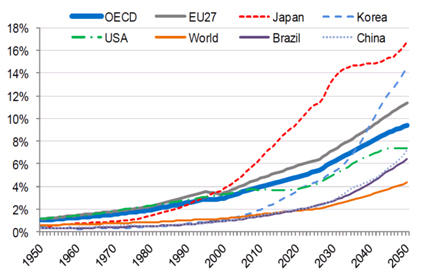
Rapidly increasing share of the population aged over 80 years [OECD, 2011]
The European Commission published an extensive report in Ageing in Europe trends in 2012. Their findings showed the age profile of the EU is expected to change dramatically in the coming decades. Specifically, the population of the EU will be slightly higher and older in 2060. The following are the key points of interest to our Scenario Workshops.
Share of older people rises
The share of those aged 65 and over is projected to rise from 17% to 30%. Therefore, the EU will have approx. two people of working age to every person aged over 65. Currently there are four people of working-age to each person aged over 65 years.
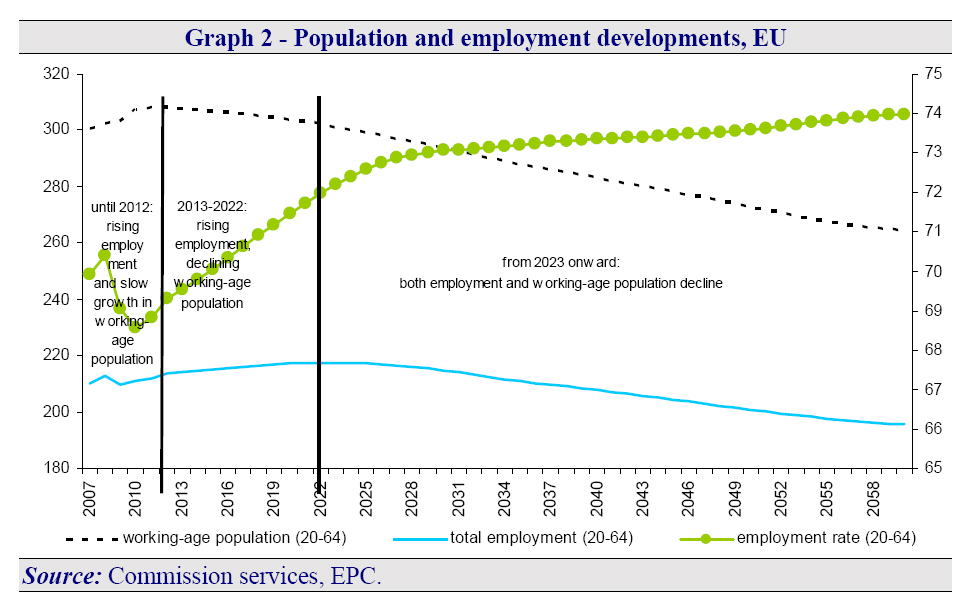
Economic consequences
The total number of workers is estimated to decline by 15.7 million to 195.6 million in 2060. The decline in the workforce will effect growth and per capita income, with a forecasted decline in potential growth.
![]()
Life expectancy rises
Life expectancy at birth is projected to increase from 76.7 years in 2010 to 84.6 in 2060 for males and from 82.5 to 89.1 for females.
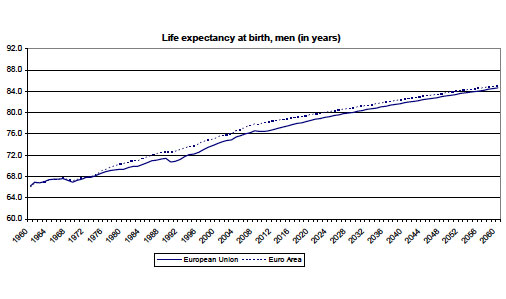
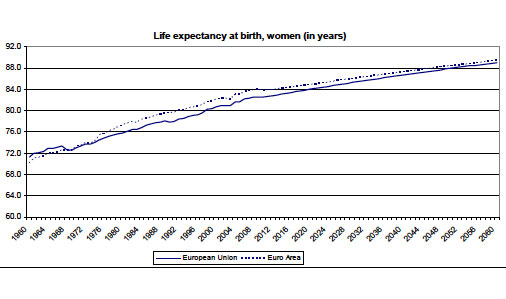
Changes in the structure of the population by the main age groups, EU27 (in%)
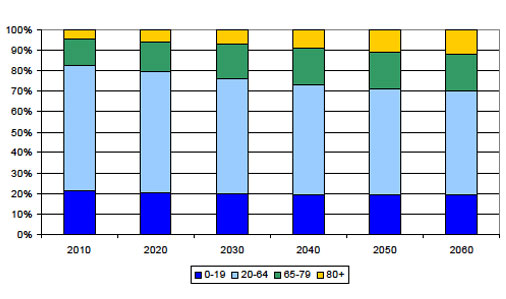
Source: The 2012 Ageing Report: Economic and budgetary projections for the 27 EU Member States (2010-2060). European Commission.
Demand for care services is increasing
The demand for long-term care workers is expected to double (from 2008) by 2050 [OECD, 2011]. More and more women participate in the formal labor market and are likely to contribute to the decline in the availability of family caregivers. Many European countries are dealing with a shortage of trained healthcare professionals. A further societal change is that people demand more patient-oriented care. Patients become more involved in their treatments and in medical decision taking.
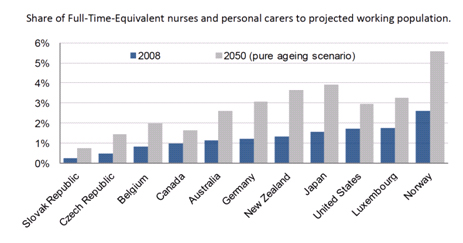
Ageing in 2025
Technology and service innovations are expected to help respond to the demand for sustainable healthcare systems. The introduction of Information and Communication Technology (ICT) and telemedicine is estimated to improve efficiency of health care by 20 %, improving at the same time the quality of life of patients [EU, 2013 (page 6)].
Technologies like telecare, telemedicine, welfare technology, robotics, ambient assisted living as well as widely used consumer technologies like PCs, smartphones and tablets are likely to play a key role to support senior citizens in the future[2]. They have the potential to enable seniors to
- live independently and securely at home longer
- avoid, delay or reduce hospitalization
- better socialize and participate in society
- live better in care and nursing schemes
The technologies can be used in many ways. Our society can choose different strategies for the care services, and for the introduction of new technological tools in this sector. The technology promises many opportunities, but there are challenges to be solved and ethical dilemmas to be considered. How can we best use new technology in care services, and what type of policy options are policy makers faced with?
[1] WHO: Interesting facts about ageing.
[2] See page Technology Description for technologies that can better manage senior’s everyday life.
Introduction to the method
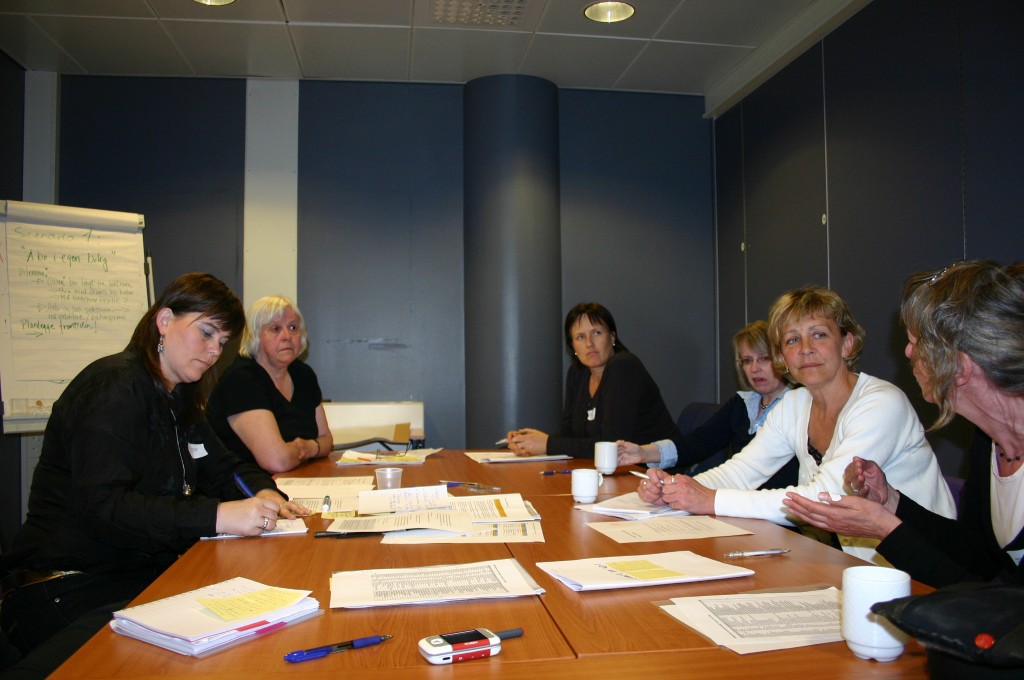
There will always be actors that are affected, positively or negatively by research, technological development and policy decisions. These actors have a stake in the issues, but are not automatically consulted or included in the decision-making process. These stakeholders can be commercial actors, involved in research and development or owners of natural resources (for example farmers being affected by construction activities in their neighborhood). Stakeholders can also be lobby groups or non-profit organizations.
How can they contribute and get involved in policy making? And how can one facilitate this kind of involvement? This is the challenge that the stakeholder example project in PACITA will take on, using one particular method for stakeholder involvement: the scenario workshop.
The typical homogenous groups of experts, who are often involved and consulted in policy processes, can weaken the democratic aspect of policy making because the discussions often will evolve around one expert view. Involving a broader and more balanced spectrum of actors makes the process more transparent and accountable. Stakeholder involvement is one method to make the decisions more robust and socially acceptable. Involving relevant stakeholders in the process can give them ownership to the process. This in turn can make implementation in society easier.
Stakeholder involvement can also lead to better informed policy decisions and more critical discussions about the topic at hand. A variety of voices will make the discussion open to different kinds of knowledge, more perspectives and dilemmas.
Using scenario workshop in policy discussions
A scenario workshop is a method aimed at facilitating forward-looking discussions and identifying policy alternatives in different contexts. In PACITA, the workshops will stimulate discussions on how one can meet the needs and face the challenges of the rising number of older adults in different European countries, with a set of scenarios as a starting point for the discussion.
The purpose of the scenarios is to make the participants more conscious of future developments and connected choices related to technology, and inspire them to critically reflect on them. These discussions will contribute to the development of new visions and policy options.
The aim of the workshop is to identify policy options – how decision makers may handle the challenges of the ageing society using technology.
In addition, the scenario workshop is an arena to grasp the important stakeholders’ views on the topic. Bringing their own experiences, the participants will contribute with their visions, and identify possible barriers and pathways for reaching these visions.
PACITA will organize workshops in 9 European countries: Belgium, Bulgaria, Czech Republic, Denmark, Hungary, Norway , Republic of Ireland, Spain and Switzerland. The same set of scenarios will be used in all countries and each workshop will be summarized in a national report. The findings from the national workshops will later be gathered and analyzed in a synthesis report, to be presented at a policy conference in Brussels in 2014.
Organizing a scenario workshop
The scenario workshop is a one-day event that gathers a broad group of stakeholders. The workshops organized by PACITA will aim at formulating national policy options for each of the involved European countries on the topic of the future of ageing and care technology.
The scenario workshop usually consists of three phases:
- critical analysis
- formulation of visions
- implementation phase
In the first phase, the participants give both positive and negative feedback on the available scenarios, based on their own experiences. With the critical analysis as a starting point, the second phase aims at the participants’ development and articulation of their visions for the future of the topic at stake. The last phase relates to how these visions can be translated into reality. The participants will identify barriers for their visions and propose how these can be overcome by discussing action plans.
Ut rutrum elementum convallis. Sed varius tincidunt tristique. Phasellus sit amet elit aliquam, faucibus nulla quis, venenatis quam. Nunc vel elit felis. Vivamus nec urna semper, cursus libero a, imperdiet orci. In ante quam, euismod vel augue eget, adipiscing iaculis quam. Cras tincidunt arcu eget nunc porta, ut bibendum purus ultricies. Phasellus ultricies hendrerit orci eu vulputate. Mauris elementum erat et malesuada ultricies. Curabitur suscipit diam nec justo eleifend commodo. Curabitur libero erat, euismod faucibus purus tempus, iaculis faucibus magna. Suspendisse at erat a nunc rutrum vulputate accumsan non nulla. Maecenas auctor vestibulum odio et faucibus. Duis suscipit, urna sed scelerisque sagittis, leo urna aliquam libero, nec semper sem lacus vel mauris. Donec volutpat porttitor sapien, id porttitor turpis interdum quis. Integer rutrum libero lacus, sed tempor neque pharetra et. Aenean rhoncus risus sed diam sodales, eu scelerisque lorem tincidunt. Aliquam orci turpis, vehicula venenatis fringilla non, vulputate ac justo. Praesent tincidunt odio ut sapien tristique, eget semper nisi faucibus. Class aptent taciti sociosqu ad litora torquent per conubia nostra, per inceptos himenaeos. In quis tellus eget metus rhoncus cursus vitae vel sapien. Integer et ante nisi. Class aptent taciti sociosqu ad litora torquent per conubia nostra, per inceptos himenaeos. Etiam ultricies eu nisi et tristique. In tempor felis eu massa porttitor porta. Lorem ipsum dolor sit amet, consectetur adipiscing elit. Nullam lacinia scelerisque velit, sit amet aliquam est malesuada vitae. Sed sit amet leo dapibus, euismod purus a, sodales tellus. Proin a ligula id odio rhoncus euismod et id nibh. Donec non eros at elit ullamcorper consectetur. Integer accumsan risus elit, a luctus purus tincidunt non. Fusce faucibus lacus vel nisl euismod rutrum. Fusce mollis orci egestas purus scelerisque, vulputate varius velit sollicitudin. Aenean vestibulum molestie lacus vitae interdum. Nunc aliquam molestie tellus egestas porta. Nullam vel urna ac turpis malesuada suscipit. Aliquam ultricies libero non felis imperdiet, pharetra auctor nulla venenatis. Nullam ut purus a nibh tristique viverra nec at dui. Cum sociis natoque penatibus et magnis dis parturient montes, nascetur ridiculus mus. Nulla facilisi. Praesent ut urna porta, sodales urna sit amet, elementum arcu. Sed lacinia lobortis eleifend. Nam ac scelerisque dolor, ac consectetur nulla. Etiam ac lectus ac nulla eleifend porttitor in at elit. Etiam id blandit dui. Nulla ullamcorper ac nulla vitae fringilla. Donec adipiscing nunc at lacus facilisis dignissim. Duis in sapien felis. Donec a libero gravida, varius justo non, vehicula libero. Integer elementum odio porttitor ipsum aliquet, a convallis tellus placerat. Praesent eleifend non est ac volutpat. Sed vel orci non risus imperdiet tincidunt sed sit amet odio. Vestibulum id tellus vel elit vulputate porttitor. Fusce diam eros, luctus non dolor nec, mattis dapibus augue. Proin pretium semper ullamcorper. Maecenas commodo sed ante eget semper. Suspendisse at mattis nunc. Praesent faucibus non mauris eget elementum. Nunc sed vulputate ipsum. Quisque rutrum, nisi et tristique scelerisque, diam eros mattis leo, a hendrerit purus nisl sit amet sapien. Phasellus ut faucibus nunc, quis elementum elit. Aliquam erat volutpat. Lorem ipsum dolor sit amet, consectetur adipiscing elit. Duis facilisis, magna sed adipiscing egestas, nisi est placerat nisl, dapibus ullamcorper orci odio non nunc. Nulla dapibus ipsum sit amet iaculis sodales. Sed ultricies lectus in erat malesuada, non rhoncus velit congue. Pellentesque imperdiet consectetur turpis, vitae commodo nisi dignissim nec. Proin aliquam elit mauris, in ultrices ante blandit eget. Maecenas at urna non quam commodo rhoncus vel at mauris. Etiam libero leo, rutrum ac lectus quis, consectetur elementum ligula. Morbi dui erat, pellentesque vestibulum felis ut, aliquam tincidunt arcu. Fusce nunc ante, lobortis vel libero a, accumsan eleifend justo. Duis in ipsum quis diam ultricies feugiat. Donec ultrices nisl lorem, ut convallis nulla viverra in. Integer ut dui augue. Praesent mollis, tellus id auctor venenatis, mi tortor vestibulum est, quis venenatis massa tellus non dolor. Quisque in condimentum diam. Aenean euismod libero sem, non accumsan nulla scelerisque ut. Integer in condimentum arcu. Nam cursus imperdiet elit nec malesuada. Vestibulum ante ipsum primis in faucibus orci luctus et ultrices posuere cubilia Curae; Duis mattis rutrum dui non mattis. Curabitur eget lectus mattis neque iaculis pellentesque at at ipsum. Nullam aliquam tincidunt metus et placerat. Duis in neque commodo, vehicula lacus eu, lobortis eros. Morbi placerat a ante sit amet condimentum. Curabitur consectetur sit amet ante sed placerat. Pellentesque ornare placerat nunc, vitae rhoncus risus dapibus in. Pellentesque hendrerit augue ut venenatis porta. Maecenas pharetra quis augue non luctus. Praesent gravida commodo sapien. Aenean justo ligula, mattis vitae felis nec, varius euismod est. Integer posuere tempor metus id luctus. Lorem ipsum dolor sit amet, consectetur adipiscing elit. Etiam risus lectus, hendrerit id dapibus eget, viverra nec neque. Mauris faucibus tempor lectus ut fringilla. Nulla a augue molestie, accumsan diam et, tempor nisl. Praesent scelerisque, ante eu malesuada laoreet, nisi neque sagittis massa, a fringilla ligula lectus sit amet eros. Pellentesque lectus nunc, pharetra at lorem ac, eleifend condimentum sem. Quisque quis fringilla lorem. Nam hendrerit quam id pellentesque hendrerit. Praesent ac erat nisi. Integer imperdiet tempus dictum. Ut rutrum elementum convallis. Sed varius tincidunt tristique. Phasellus sit amet elit aliquam, faucibus nulla quis, venenatis quam. Nunc vel elit felis. Vivamus nec urna semper, cursus libero a, imperdiet orci. In ante quam, euismod vel augue eget, adipiscing iaculis quam. Cras tincidunt arcu eget nunc porta, ut bibendum purus ultricies. Phasellus ultricies hendrerit orci eu vulputate. Mauris elementum erat et malesuada ultricies. Curabitur suscipit diam nec justo eleifend commodo. Curabitur libero erat, euismod faucibus purus tempus, iaculis faucibus magna. Suspendisse at erat a nunc rutrum vulputate accumsan non nulla. Maecenas auctor vestibulum odio et faucibus. Duis suscipit, urna sed scelerisque sagittis, leo urna aliquam libero, nec semper sem lacus vel mauris. Donec volutpat porttitor sapien, id porttitor turpis interdum quis. Integer rutrum libero lacus, sed tempor neque pharetra et. Aenean rhoncus risus sed diam sodales, eu scelerisque lorem tincidunt. Aliquam orci turpis, vehicula venenatis fringilla non, vulputate ac justo. Praesent tincidunt odio ut sapien tristique, eget semper nisi faucibus. Class aptent taciti sociosqu ad litora torquent per conubia nostra, per inceptos himenaeos.
Welcome to WordPress. This is your first post. Edit or delete it, then start blogging!

